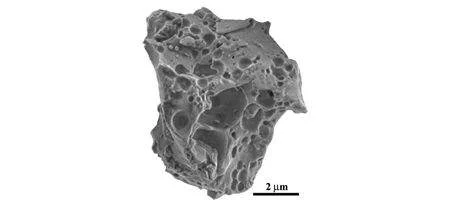The water found locked inside soil on the moon’s surface derives from hydrogen in the solar wind – meaning there could be water on other apparently-dry bodies in the solar system too.

Over the last few years, scientists have realized that the moon isn’t as dry as thought, with NASA’s Lunar Crater Observation and Sensing satellite, LCROSS, finding material that was surprisingly rich in water ice in a permanently shadowed lunar crater in 2009.
Water and related compounds have also been detected in the lunar regolith, the layer of fine powder and rock fragments that coats the lunar surface.
Where it came from, though, remained a mystery, with many scientists suggesting that it derived from water-bearing comets and other chunks of space debris.
However, theoretical models of lunar water stability dating to the late 1970s suggest that hydrogen ions from the solar wind could combine with oxygen on the moon’s surface to form water and related compounds called hydroxyls, which consist of one atom of hydrogen and one of oxygen and are known as OH.
And new research from the University of Michigan supports this idea.
Infrared spectroscopy and mass spectrometry analyses of Apollo samples reveal the presence of significant amounts of hydroxyl inside glasses formed in the lunar regolith by micrometeorite impacts, they say.
“We found that the ‘water’ component, the hydroxyl, in the lunar regolith is mostly from solar wind implantation of protons, which locally combined with oxygen to form hydroxyls that moved into the interior of glasses by impact melting,” says geology professor Youxue Zhangs.
“Lunar regolith is everywhere on the lunar surface, and glasses make up about half of lunar regolith. So our work shows that the ‘water’ component, the hydroxyl, is widespread in lunar materials, although not in the form of ice or liquid water that can easily be used in a future manned lunar base.”
The findings imply that the ice inside permanently shadowed polar craters on the moon, sometimes called cold traps, could contain hydrogen atoms that derives from the solar wind.
“This also means that water likely exists on Mercury and on asteroids such as Vesta or Eros further within our solar system,” says Yang Liu, now of the University of Tennessee. “These planetary bodies have very different environments, but all have the potential to produce water.”






